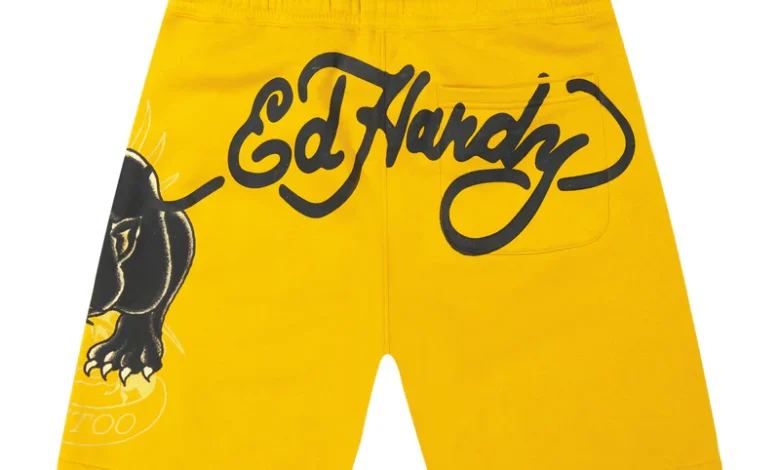How Ed Hardy’s Designs Merged Streetwear and Couture

Ed Hardy’s designs became iconic in the early 2000s for their bold mix of tattoo art, streetwear style, and high-end fashion. What made Ed Hardy’s brand stand out was its ability to merge street culture with elements of couture, creating a unique and rebellious aesthetic. By blending these two worlds, Ed Hardy brought tattoo-inspired art to the forefront of fashion, making it accessible to a wide range of people, from celebrities to everyday consumers. This article explores how Ed Hardy’s designs successfully merged streetwear and couture, creating a lasting impact on the fashion industry.
The Origins of Ed Hardy’s Tattoo Art
Before Ed Hardy became a fashion ed hardy jeans brand, it was rooted in the art of tattooing. Ed Hardy, the man behind the brand, was a renowned tattoo artist who drew inspiration from traditional Japanese tattoo art and American street culture. His intricate designs, often featuring skulls, tigers, roses, and koi fish, became his signature. Hardy’s artwork was more than just visual; it was a form of personal expression and storytelling, and this approach would later become central to his fashion brand. The brand’s fusion of art and apparel started with Hardy’s belief that tattoos could tell stories, and these stories translated seamlessly into wearable fashion.
The Collaboration with Christian Audigier
The turning point for Ed Hardy came when French designer Christian Audigier approached Hardy with the idea of transforming his tattoo art into fashion. Audigier had a vision to bring Hardy’s designs to a larger audience, merging streetwear with high-end fashion elements. Audigier, known for his work with brands like Von Dutch, was skilled at creating edgy, street-savvy clothing that appealed to mainstream consumers. This collaboration allowed Ed Hardy to evolve from a niche tattoo artist into a global fashion brand. Audigier’s marketing genius helped push the brand into the celebrity spotlight, making Ed Hardy synonymous with the early 2000s fashion scene.
Streetwear Meets Couture
One of the most notable aspects of Ed Hardy’s designs is the way they bridged the gap between streetwear and couture. Streetwear, known for its casual, urban, and often rebellious nature, was typically seen as separate from the more polished, luxurious world of couture. However, Ed Hardy’s clothing challenged this notion by combining the bold, graphic elements of streetwear with high-quality fabrics and detailed embellishments often associated with couture. This fusion created a distinct look that appealed to both street culture enthusiasts and fashion-forward individuals who wanted something different from the norm. The use of rhinestones, embroidery, and other luxe touches on T-shirts and hoodies helped elevate streetwear into something more refined.
Celebrity Endorsement and Cultural Impact
The success of Ed Hardy can largely be attributed to its widespread celebrity endorsement. Stars like Madonna, Britney Spears, and Justin Timberlake were frequently spotted wearing Ed Hardy designs, helping to catapult the brand into mainstream fashion. This celebrity influence played a key role in merging streetwear with high fashion, as these figures were known for their trendsetting style. Ed Hardy became a symbol of status, individuality, and rebellion, attracting a global audience. The brand’s designs were bold, eye-catching, and unapologetically flashy, making them perfect for the era of celebrity-driven fashion.
The Iconography of Ed Hardy
Ed Hardy’s designs were instantly recognizable due to their bold use of tattoo art. The imagery of tigers, skulls, and dragons, combined with bright, vibrant colors, became synonymous with the brand. These designs spoke to a generation that was embracing individuality and self-expression through their clothing choices. The use of tattoo art in fashion was groundbreaking at the time, as tattoos were still considered a form of counterculture. Ed Hardy helped bring tattoos into the mainstream, making them not only acceptable but fashionable. The iconography of Ed Hardy designs became a statement of identity, allowing wearers to express their rebellious spirit through their clothing.
The Expansion of the Brand
As Ed Hardy’s popularity grew, so did the brand’s product offerings. What started as a line of T-shirts quickly expanded into a full lifestyle brand, including accessories, footwear, fragrances, and even home décor. This expansion allowed Ed Hardy to cement its place in the fashion world, as it became more than just a clothing brand. The brand’s ability to merge streetwear and couture across different product lines showcased its versatility and wide appeal. Whether through a pair of sneakers or a perfume bottle adorned with tattoo art, Ed Hardy’s influence permeated multiple aspects of fashion and lifestyle, further blending street and high fashion.
Controversy and Overexposure
While Ed Hardy enjoyed immense success in the early 2000s, the brand also faced criticism and controversy, particularly due to its overexposure. As the brand’s designs became more popular, they were quickly adopted by a wide range of consumers, leading to accusations that Ed Hardy had become too commercialized. This overexposure diluted the brand’s original edgy and rebellious spirit, as it became associated with flashy, ostentatious fashion. Some critics argued that Ed Hardy’s designs had lost their authenticity, becoming more about celebrity culture than genuine artistic expression. This backlash led to a decline in the brand’s popularity by the end of the decade.
Ed Hardy’s Lasting Legacy
Despite the controversies and decline in popularity, Ed Hardy’s impact on fashion is undeniable. The brand’s fusion of streetwear and couture paved the way for future designers to explore similar territory, blending casual, urban style with high-end elements. Ed Hardy’s use of tattoo art in fashion was particularly revolutionary, as it helped shift cultural perceptions of tattoos, making them more widely accepted and celebrated. The brand’s influence can still be seen in today’s fashion landscape, particularly in the streetwear and luxury markets, where bold graphics and artistic expression are celebrated.
The Return of Early 2000s Fashion
In recent years, there has been a resurgence of interest in early 2000s fashion, often referred to as Y2K fashion. As a major player in this era, Ed Hardy has experienced a revival, with vintage pieces from the brand becoming highly sought after. The renewed interest in Ed Hardy highlights the cyclical nature of fashion and the enduring appeal of bold, expressive designs. Younger generations, who may not have experienced the brand’s initial rise, are now discovering its unique blend of streetwear and couture, further solidifying Ed Hardy’s place in fashion history.



